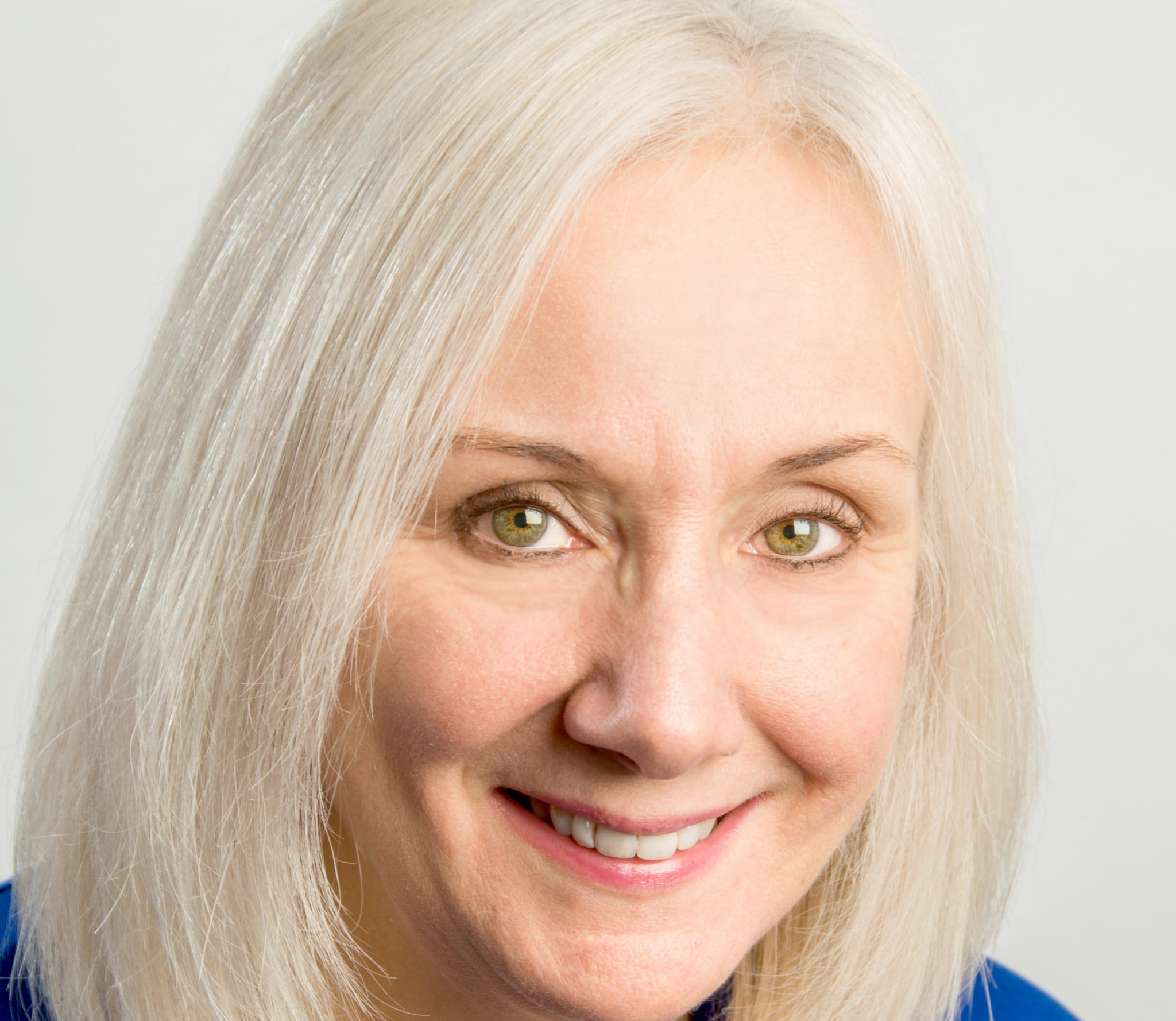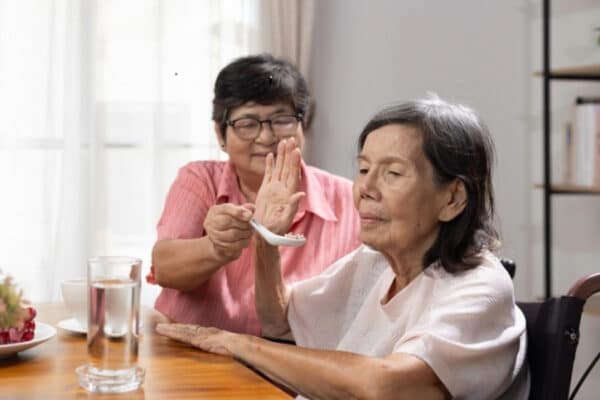The article was first published on Care Management Matters (CMM)
READ THE ARTICLE HERE
Earlier this year, the Care Quality Commission (CQC) published an article entitled, How technology can support high-quality care. The article covered the benefits of using technology. But the central message seemed to be that ‘technology and innovation [should] never come at the expense of high-quality, person-centred care’.
While that is a sound argument that every care provider would agree with, it is also true that both are inextricably linked. If technology and innovation are implemented correctly, they can take person-centred care to new levels.
In CMM’s latest Knowledge piece, Christine Asbury, who recently joined Quality Compliance Systems (QCS) from WCS Care, where she was Chief Executive for eight years, talks about the growing role of innovation in the sector, and why instilling a culture of creativity in a service is a crucial first step.
Christine began by talking about her new role at QCS.
What are you ambitions in your new role?
I’ll be working closely with providers and customers to help them to create their own model of great care. Sadly, far too 
Therefore, as Director of Insight and Innovation, I want to use all of my knowledge and experience to put innovative care solutions – that go beyond current regulatory standards – in the hands of the leaders, frontline care workers and people using services. That’s how meaningful, lasting change and improvement will happen.
Why do you think that the care sector isn’t as creative in its approach to delivering outstanding care as it could be?
There isn’t a simple answer to this question, but I think there’s a few things that have stymied innovation.
Firstly, I think it’s fair to say that the sector is heavily focused on compliance and allows that to define quality. A culture of compliance, for example, reinforced by CQC’s rating system, has become the industry standard. Innovation is not defined in the key questions or the KLOEs that underpin them and many CQC inspectors aren’t confident in recognising the innovation that can transform the experience of living in a care home.
It would be totally unfair to use this interview to criticise CQC, which would paint an inaccurate picture of the steps it is currently taking to drive positive change. CQC’s senior policy and insight teams are focused on innovation. I know this because – along with others in the sector – I was involved in an extensive piece of work last year, which helped CQC to develop its approach to innovation. I know that helped CQC recognise that it needs to provide more guidance to inspectors on how to recognise innovation as an enabler of outstanding care.
I haven’t yet seen this widely cascaded to frontline inspectors, and there is a danger that, if and when guidance is formalised, it becomes too prescriptive. If this happens, the sector will again be relying on its regulator to define the link between innovation and outstanding care.
Anyway, by its nature, innovation is new and different, so how would you prescribe for that? Instead, the social care sector needs to have the confidence to decide for itself what outstanding care looks like, and, more importantly, how to best deliver it. We need diversity in the care sector, not uniformity!
Many care providers often confuse technology and innovation. How do the two differ and what are the ramifications of not understanding this subtle difference in meaning?
Creativity is the creation of something new and exciting, and innovation is the application of that newness. Technology is just a tool for delivering the innovation. Some people mistakenly focus on technology as a standalone solution, which it is not!
Creativity and innovation come from a culture where change is seen as positive and exciting, and is led from the top. It should cascade all the way through to frontline care workers. You can’t ‘do’ innovation; you just have to ‘be’ innovative and that starts with leadership.
Innovation needs to drive any decision about technology; there’s an intention to do something better and differently – preferably for the people you support rather than just for commercial efficiency. And then leadership is needed to implement it, adapt how we work, and make sure the technology is working for us – not the other way around.
Take the acoustic listening system which is now used in several of WCS Care’s care homes (of course with residents’ or their family’s permission). We wanted to avoid disruptive and intrusive night checks and give people more privacy and control over their night times, while also recognising our duty of care to ensure that people remain safe. Leadership and planning was critical because night staff needed to change their behaviour – from visiting residents’ rooms to check on them throughout the night, to waiting to be deployed where they were required and trusting the system to alert them when they were needed (they ended up having fun in the home’s café with the residents who didn’t want to sleep!).
How does acoustic listening technology work and what benefits did the system bring to service users?
When a certain level of noise is created it triggers an alert to a staff member who can then listen to see what’s happening and respond appropriately. There were immediate wellbeing benefits – on the first night in one home, we heard a resident weeping which we would have missed until our next room check, and were able to go to comfort her straightaway. She was upset because she couldn’t remember when she’d last seen her family members.
And if you’re wondering how and where leadership comes in, then the following example serves as a good illustration. In another home after the first week, night staff told us that we needed to reduce the system’s volume sensitivity because the sound of them walking outside rooms was triggering alerts. We were able to challenge them on this, and they then realised it was their behaviour that needed to change. They made a conscious effort to be quieter outside rooms, as when the system was triggering a noise alert from the corridor it was likely to be disturbing people’s sleep.
Contrast this with one provider who visited the Innovation Hub at WCS’s Castle Brook care home and was inspired to purchase the acoustic listening system. Several months later, it transpired that they hadn’t worked out how to get staff on board and implement the system. They hadn’t therefore switched it on. There’s a real danger that without the right culture and leadership, technology ends up as an expensive white elephant.
How do you think care homes will change in the future?
I think care homes are going to remain a key part of long-term and end of life care for those of us who are frail and in our last years. I would like to see care homes continuing to become comfortable and homely, domestic scale environments. Most importantly, people should feel able to carry on doing the things they’ve always done, keep their independence and have control over their own daily life. That often means being in control of the small things such as feeling comfortable enough to make themselves a cup of tea and changing the TV channel in their living area. For me, that’s more important than a luxury hotel environment, or having access to an extensive wine list, although of course that will be the preference for some.
There’s already been a move over the last 15 years towards smaller households – and at WCS Care the most recent new-build was created around households of six people because that felt like the right domestic scale. I’ve been influenced by what I’ve seen in the Netherlands – for instance the rightly famous De Hogeweyk dementia village near Amsterdam – and in Germany.
In Britain, people might argue that a lack of funding in the sector simply doesn’t lend itself to this model. I don’t agree. Creating smaller households does not necessarily create higher costs. The optimal new-build care home size in the UK is between 60-90 people, and it’s easy to break this down into 10 or 12 households of six or seven.
Conversely, when resident numbers are over 100, it often becomes very challenging for providers to manage the care home, and when numbers are too low, it simply isn’t a cost-effective build.
Smaller households where people sleep, relax, do their hobbies, cook and eat their meals deliver control and independence and prevent institutional practices. Ultimately, however, you still need to have strong leadership to ensure people, not staff, stay in charge.
What future technologies are likely to be implemented in care homes in the future?
When a culture of innovation is deeply embedded within a care home, technology can help deliver control and independence. Providers will be looking for ways to improve the quality of daily life for future clients, whose expectations are likely to escalate rapidly anyway. There won’t be many of our current 70 year olds who don’t expect WiFi, video calling, smart TVs, films on tap and Alexa’s responsive presence in any future living environment.
Other technologies will be recognised for a direct impact on people’s wellbeing. WCS Care retrofitted circadian rhythm lighting in one household and throughout its newest home in Warwick. The quality of light mimics the natural rhythm of a summer day, with strong white light in the morning, gradually changing to cosier, orange light in the evening. There was a dramatic and documented improvement in residents’ wellbeing, affecting sleep patterns, appetites, daytime alertness, and reducing distress and sundowning.
But not every home can benefit from circadian lighting; it may not be cost-effective to retrofit. And that’s where a culture of innovation proves its worth. Why? Well, if you can’t use technology to improve people’s access to light, what can you do? The solution is making better use of the outdoors, which I think most care homes are terrible at doing.
At some WCS Care homes, where circadian lighting wasn’t an option, they devised eight opportunities to entice residents to use outside areas – all year round. For a start, where it was safe, doors needed to be unlocked – and my experience as I visit other providers’ care homes is that’s a rarity. Opportunities included conservatories, greenhouses, raised flower, vegetable and herb beds and specialist ‘side by side’ bikes and tracks.
Setting challenges such as a daily outdoor exercise session led to dance sessions and walking clubs in the gardens whatever the weather (that’s what umbrellas are for!). And then they used their electronic care planning system to measure every resident’s weekly time outdoors. What you measure, you generally improve, and if teams are confident they’re allowed to be innovative they will come up with great ideas.
So, to conclude, it’s back to the same point: it’s leadership and the ability to think creatively that really matters. Without that, technology isn’t going to be a solution. And sometimes, where we can’t rely on technology, we have to – and will – come up with alternatives. I don’t think it can ever replace the people factor in care.
To find out more about QCS, call 033 405 3333 or email [email protected].






